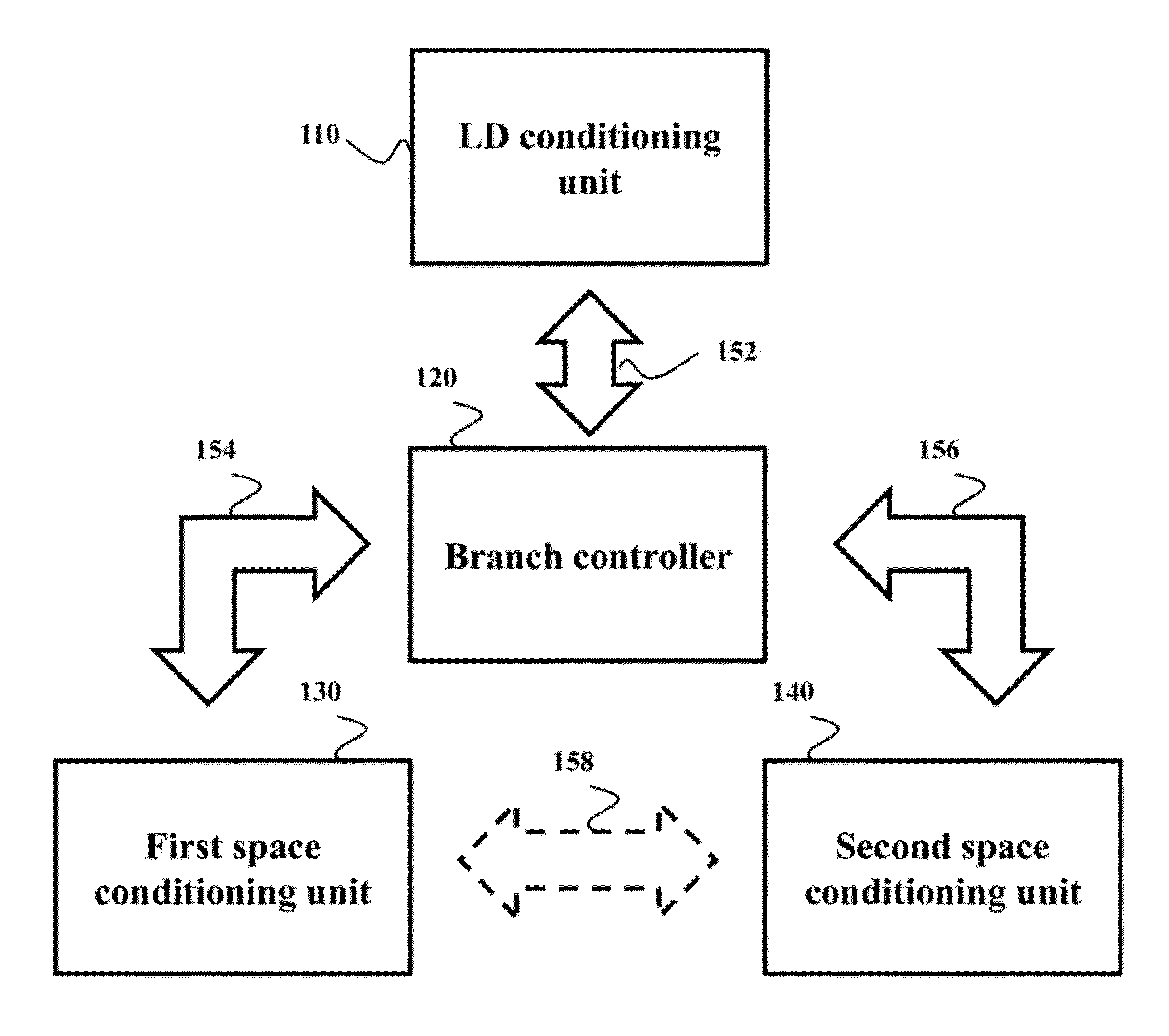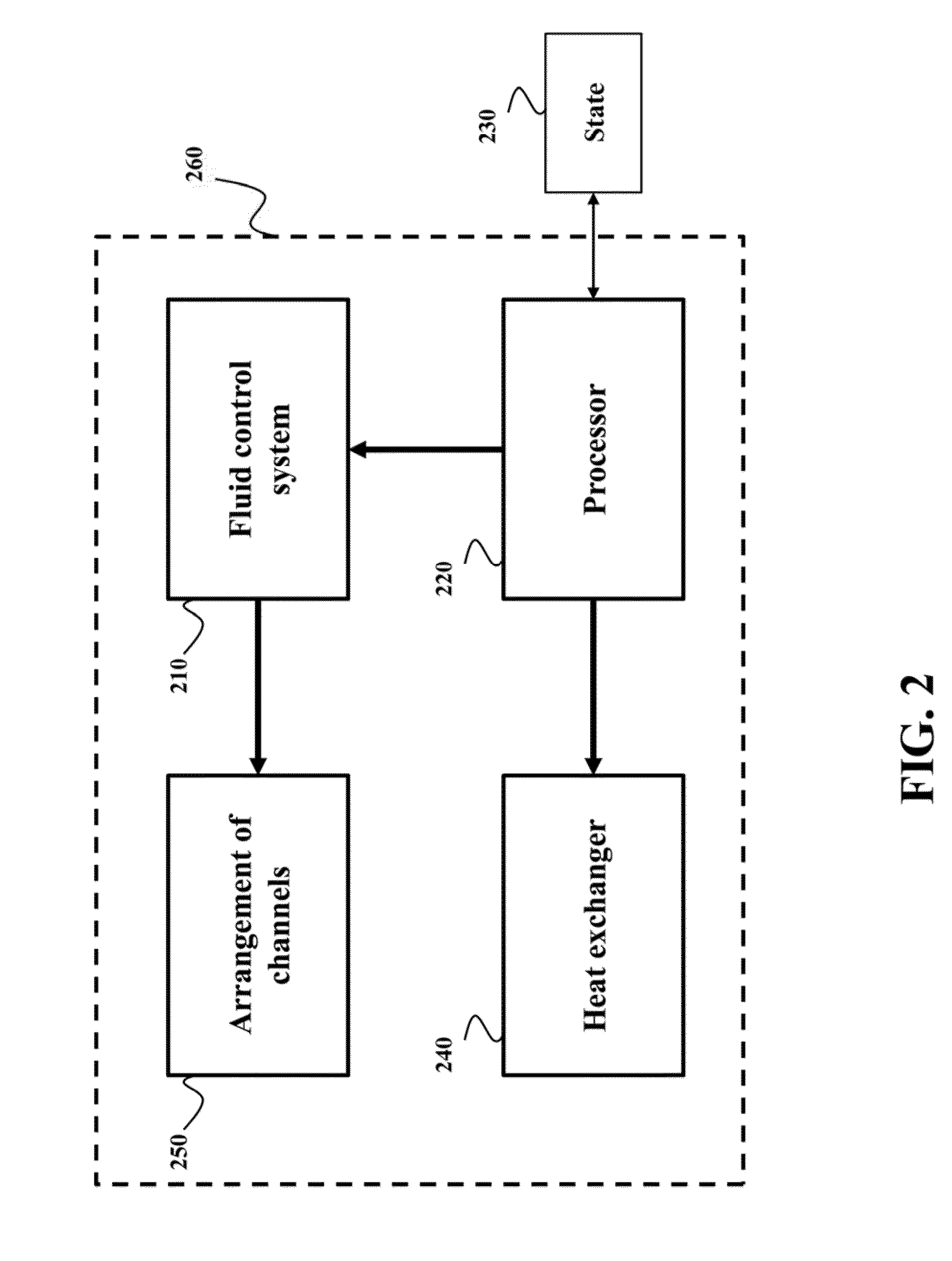System and Method for Controlling Temperature and Humidity in Multiple Spaces using Liquid Desiccant
a technology of desiccant and multiple spaces, applied in the field of temperature and humidity control, can solve the problems of not always the case, people may still feel uncomfortable, and the air conditioning system does not operate, so as to improve the comfort of occupants in a building
- Summary
- Abstract
- Description
- Claims
- Application Information
AI Technical Summary
Benefits of technology
Problems solved by technology
Method used
Image
Examples
Embodiment Construction
[0032]FIG. 1 shows a block diagram of a system for temperature and humidity control according to one embodiment of the invention. The system includes a liquid desiccant (LD) conditioning unit 110 for changing a temperature and a concentration of a liquid desiccant. For example, the liquid desiccant conditioning unit can include a regenerator and multiple heat exchangers for changing the temperature and the concentration of the liquid desiccant (not shown). The system also includes multiple space conditioning units for controlling indoor environments using the liquid desiccant. For example, the system can include a first space conditioning unit 130 for controlling a first environment and a second space conditioning unit 140 for controlling a second environment. The first and the second environments are usually physically separated from each other, e.g., in separate rooms in a building. The system also includes a branch controller 120 for redirecting the liquid desiccant received from...
PUM
 Login to View More
Login to View More Abstract
Description
Claims
Application Information
 Login to View More
Login to View More - R&D
- Intellectual Property
- Life Sciences
- Materials
- Tech Scout
- Unparalleled Data Quality
- Higher Quality Content
- 60% Fewer Hallucinations
Browse by: Latest US Patents, China's latest patents, Technical Efficacy Thesaurus, Application Domain, Technology Topic, Popular Technical Reports.
© 2025 PatSnap. All rights reserved.Legal|Privacy policy|Modern Slavery Act Transparency Statement|Sitemap|About US| Contact US: help@patsnap.com



